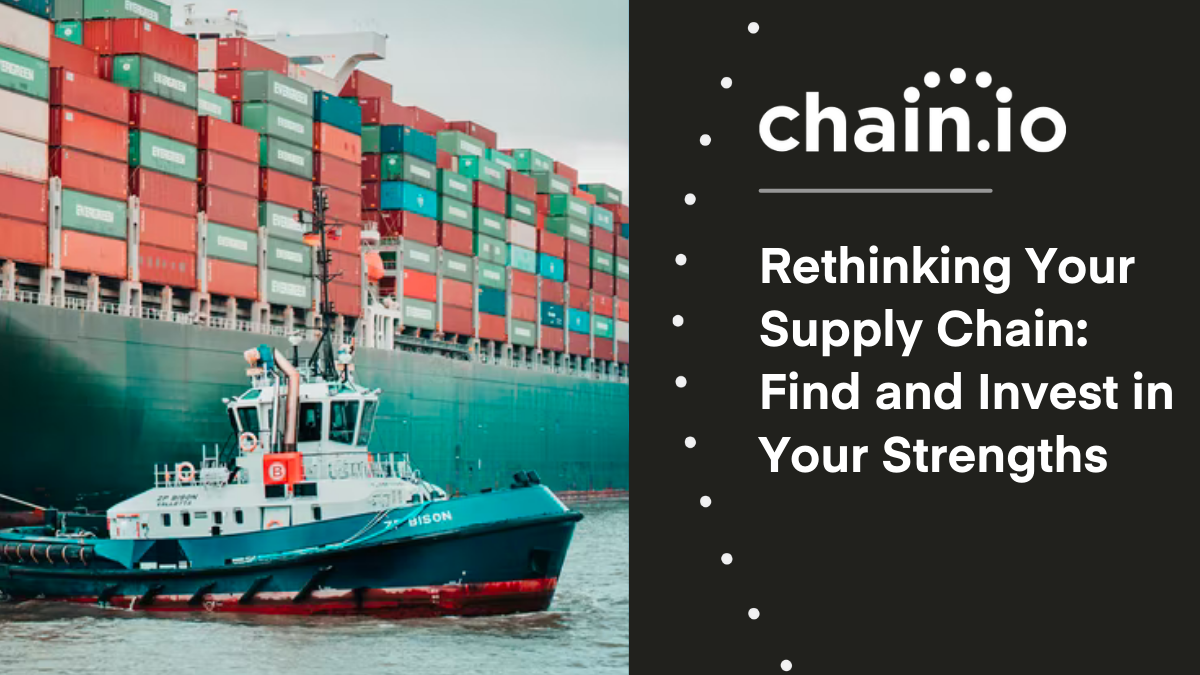In today’s increasingly intricate world of supply chain management, what makes your company unique? What sets you apart? What are you good at? What do you want to be good at? Basically, what are the foundational blocks of your company’s one-of-a-kind nervous system?
These might be hard questions to answer, at least initially. Ten years ago, the drive was to be good at everything — to use, build, or provide an end-to-end solution in which your company excelled in all aspects. Back then, these all-in-one, suite-based approaches seemed like the right path, both for vendors and for users.
But we’ve stepped into a new world. Supply chain management is now built around layers of integrated solutions and is powered by the cloud. More than ever before, charting your company’s strengths and priorities is paramount for shippers, freight forwarders, and suppliers and vendors. Because whether you’re two people in a one-room office using an Excel spreadsheet as your transportation management system, or you’re a global 3PL or carrier with 30,000 employees, you can’t be great at everything. Nobody can.
That should be empowering, even liberating. You don’t have to be great at everything. You’re free to find your strengths and invest in them. You can find what makes your company unique and double down.

Rethinking Your Supply Chain
Ask yourself where you want to lead, where you want to follow, and where you want to get out of the way. As you begin building out your nervous system and interconnecting all of the various points of your supply chain management, you can start to understand your own DNA.
This, in turn, helps you talk to your software vendors more effectively. It helps you talk to your customers more effectively and find better alignment. And it helps you see and define your own organization in a deeper, more meaningful way in order to find better alignment across your ecosystem.
For example, consider a processes map for a third-party logistics provider (3PL). There may be upwards of 50 unique processes that all center around their core task of executing the movement of freight. That includes purchase order management, e-commerce fulfillment, shipment management, carrier booking, billing, CRM — just to name a few. Each of those might have 10 different vendors or systems behind it. So the 50 processes could ultimately turn into 500 solutions. That’s quite an ecosystem, and all for just one 3PL.

Mapping Your Ecosystem
The point is, everyone in that ecosystem needs to understand they’re part of an ecosystem, but not everyone in that ecosystem needs to understand the whole ecosystem, nor can they.
You could make a very similar map for the systems and connectivity inside any shipper or carrier, or anyone else in the industry, for that matter. Like in the previous example, they’re likely underpinned by dozens, if not hundreds, of processes and corresponding solutions.
If you don’t have a map like this, you need to make one. Then, start outlining and connecting all the various processes that make up your company’s supply chain.
What parts of that map are most important to you? What’s important to your customers, suppliers, and partners? Again, what do you want to be good at?
Draw a box around the processes that answer those questions. Then, draw a box around what’s not important to you, and shade those out.
Are you a low-cost provider or a white-glove provider? Do you focus deeply on 4PL activities? Are you the company that focuses on having a consistent experience across the globe? Do you want to excel at warehousing? Do you want to focus on e-commerce?

Know Your Own Map
Smaller companies tend to be good at this exercise because they don’t have a choice. They have to know and be able to say, “This is what I’m good at. This is where my hustle and focus is.” And vice versa — “this is what I’m not good at.”
In bigger organizations, this is harder. Nobody wants to work in the department where you have decided to be a mid-pack player, but the reality is that there’s only so much budget to go around. Being clear and honest at an executive level can remove a lot of this tension. If a VP or director understands that they need to be a mid-pack provider, they can work with their software providers to focus on things like cost savings instead of innovation, which can save millions of dollars and years of heartache.
But big or small, your company has a unique DNA, a nervous system that defines it. It is who you are. Knowing who you are and being confident in that will help you be the most effective. It will help you prioritize what’s important and what your company should be investing in. Once you do that for yourself, you can find the right suppliers that align with your organization and your goals and, on the flipside, demonstrate your value to your own customers in those same ways.
We'd love to schedule some time to hear what you're good at and recommend pre-mapped integrations that can play to your strengths.
View our integrationsGet in touch